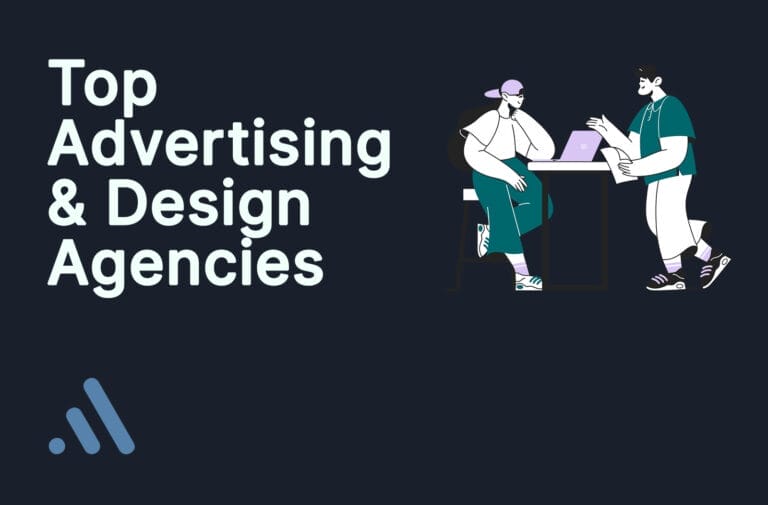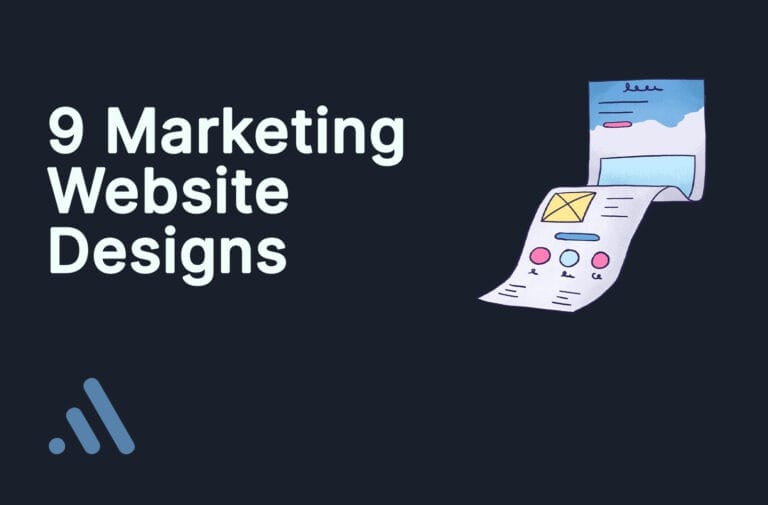Search engine optimization, or SEO, is very important for all websites. This is especially true for marketers who want to bring in the right traffic, leads, and sales. The design of your website and how you optimize each page play a big role in your SEO success and your rankings on search engines.
In this complete guide, we will cover all you need to know about SEO website design best practices. This will help improve your organic search performance.
Key Takeaways:
- SEO and web design should work together to make websites that please both users and search engines.
- Improving website navigation, content structure, and technical parts for SEO during the design process results in better rankings.
- Using SEO best practices in your website design helps search engines find, read, and understand your pages easily.
- A focus on user experience (UX design) beyond just search engines makes sites that keep visitors interested.
- Working together with marketers, designers, and developers is important to apply a good SEO strategy across the website design and development.
Great SEO and website design mix good looks, improving the rate at which visitors take action, user experience, and technical SEO best practices.
Let’s get into the specifics.
Why is SEO-Lean Web Design Crucial?

In today’s online world, having a website that is good for SEO is not just a choice – it’s a must for reaching the right people. The way your website looks plays a big role in how well it ranks on search engines and in improving SEO results.
The Role of SEO in Web Design
SEO is very important in web design today. It should be included right from the start of the design process, not added later. Parts like site structure, internal links, and metadata greatly affect search engine crawlers. Improving these areas helps with crawling and increases search visibility.
Benefits of SEO-Friendly Website Design
Some key benefits of SEO website design include:
- More organic traffic and less cost for clicks.
- Better rates for visitors who are more likely to buy.
- Improved brand visibility and trust.
- A better user experience in web design and SEO leads to fewer people leaving the site.
- Aids search engines in understanding site content better.
How Web Design Influences Search Engine Results
Web design impacts how well your pages rank on search engines like Google. When you have good information organization and metadata, it makes pages easier to read, organize, and find for searches. This results in better rankings.
On the other hand, a bad site structure hurts SEO efforts. Without proper technical setup, search engines cannot crawl or understand content well.
The Relationship Between SEO and Web Design
SEO and web design have an important and supportive connection. SEO looks at how search engines work. Web design focuses on making the user experience better and helping with conversions.
But neither works alone. SEO affects web design choices to help with crawlability and rankings. At the same time, good UX design increases time spent on the site. This lowers bounce rates, which also helps improve rankings.
Website design affects search engine optimization.
Choices in website design and development play a big role in your SEO strategy. From how fast your site loads to how well it works on mobile devices, design choices can change how search engines see and rank your site.
Follow SEO best practices during design, development, and after launch. This helps your website keep getting a lot of visitors even after it goes live. Work with SEO experts from the start for the best results.
Practical Guide on Building an SEO-Friendly Website

Creating a website that is good for SEO needs attention to several important parts during the design. Here are some helpful tips to make sites that rank better.
Understanding How Website Navigation Affects SEO
A clear and simple navigation menu helps search engines find your important pages. It also improves user experience by making content easier to find.
- Organize navigation to show the site’s layout.
- Use clear page titles that help with search engines in menus.
- Link key pages like services, blog, and contact from the main navigation.
- Check if the site can be crawled using tools like Screaming Frog.
Designing a Website: SEO and Responsive Design
More than half of all searches are done on mobile devices. So, having a responsive web design is very important for SEO and for users.
- Create mobile-friendly, responsive sites.
- Use layouts that adjust for any device.
- Ensure fast page speeds with good hosting and optimized images.
- Use data markup for rich search snippets.
Optimizing Web Pages for Higher Search Rankings
On-page SEO during design helps create pages that are great for rankings.
- Create SEO title tags that have focus keywords.
- Arrange content with headings (H2, H3) that include keywords.
- Choose designs that can lower bounce rates.
- Link related content to help with crawling.
- Include alt text for images and videos to help with indexing.
Role of Organic Search in Designing a New Website
More than half of the visitors to a website come from natural search results. So, a new website should focus on web design and SEO from the very beginning.
- Look into important topics and buyer keywords to improve content.
- Arrange the structure of information to fit what users are searching for.
- Find out what rankings you want – aim for certain keywords and spots.
- Create a site layout focused on searching and getting more conversions.
Help Search Engines Get Your Site’s Content
Different parts of design help search engines understand and show pages in results better.
- Descriptive page titles and meta descriptions.
- Proper use of headings to organize content.
- Image alt-text to explain visuals.
- Video transcripts to find multimedia.
- Structured data for better results.
When you optimize the design well, you make the site content ready for search engines.
Best Practices for SEO Website Design
Using good SEO practices during website design can greatly improve how easily people can find it online.
This video demonstrates good foundational basics.
Here are also key guidelines to follow:
SEO Best Practices in Designing a Website
Some good SEO tips to think about when you design a website:
- Find and use important buyer keywords in your site content.
- Make helpful, interesting content grouped by topics and goals.
- Create simple and clear navigation menus across the site.
- Organize pages with the right headings and tags.
- Improve page speed by reducing image size, simple backend code, and other methods.
Optimizing Your Website Design with SEO
The main ways to improve website design for better SEO results are:
- A design that works best on mobile devices.
- A simple internal linking system that search engines can read.
- Using schema markup to get rich search results.
- A solid structure for information.
- Improving on-page ranking factors such as time spent on the page.
Guidelines for an SEO-Friendly Website
Here is a list of SEO website design tips:
- Optimize all page titles and meta descriptions across the site.
- Use alt text for images and videos well.
- Ensure fast page speeds with a load time under 3 seconds.
- Use HTTPS for secure connections.
- Conduct thorough technical SEO checks and make necessary fixes.
The Role of SEO in Web Design
SEO should be part of the website design process, not something added after launch. Helping search visibility early leads to steady organic growth over time.
It stops the need to move sites to improve rankings. In the end, SEO website design cuts costs and effort while boosting return on investment.
How Google’s Search Algorithm Rewards SEO Design
Google’s algorithm prefers websites that follow SEO best practices. A well-optimized site has good page speed, works well on mobile devices, and includes proper metadata and site structure. These factors help boost search visibility and improve ranking.
The ongoing changes to Google’s algorithm mean you must keep up with SEO website design trends. Team up with experts to make sure your site design has the newest optimization to keep its top search rankings.
The Role of UX Design in SEO-Based Web Design

How UX Design Enhances SEO Web Design
UX design helps make SEO website design better in many ways. It extends the time people stay on a site and lowers bounce rates. This is good for search rankings. UX also promotes natural linking within the site and helps users find content, which supports SEO. Creating personalized experiences based on where people are and what they need is another way UX increases engagement. In general, UX aims to improve how users move around the site and how information is arranged. This makes it easier for search engines to read the site. Things like calculators that people can interact with also enhance engagement.
The Impact of UX Design on Site Ranking
Good UX design affects search rankings in two main ways. First, it boosts user engagement, like how long people spend on a site and how many links they click. It also helps create content that fits what searchers are really looking for. Both of these things help improve search rankings.
How to Create a Design That Users Like and Search Engines Approve
Balancing user experience and SEO in design requires several strategies. You should start by doing user research. This helps to create a good structure for information and content based on what users are looking for. Next, create content that is both interesting and SEO-friendly. You should also focus on making your site fast and responsive. Lastly, use location and context to provide personalized experiences for users.
Why Search Engines Value Good UX Design
Search engines like good user experience (UX) because it shows the website meets what people are looking for. Important UX signals that affect rankings are bounce rates, time spent on a page, and how deep users click. Improving these numbers helps increase visibility.
Creating a UX Design with SEO in Mind
When you think about UX design with SEO rules in mind, you get great results. For example, using SEO research to guide content and information architecture helps people find what they need. At the same time, UX centers the content on what users want.
Common mistakes in SEO web design and how to avoid them
Some UX mistakes hurt SEO. A few examples are very noticeable navigation that makes it hard to read, slow page speeds that cause people to leave, and poor information design that hides important content. It is important to have UX and SEO teams work together when building websites to avoid these problems.
The Gap Between Design and Development in SEO
There is often a gap between design and development teams when they build websites. If this gap is not fixed, it can hurt their SEO efforts.
How a Company’s Website Design Affects SEO Work Negatively
Many companies focus on website design for looks and getting more customers. But choices, like big images, difficult navigation, and poor code, can make SEO harder to manage down the line.
Without thinking about SEO during the early design stages, development has to change the site layout a lot. This can impact the schedule and expenses.
Why Web Design is Paramount in SEO Strategy
Optimizing for SEO in the beginning stages of design is very important. It is easier to create crawlability now than to fix it after.
Prioritizing SEO in design by using good metadata and a clear linking structure helps create a plan for better rankings right from the beginning.
Addressing On-Page SEO Issues in Web Design
Web design choices directly affect key on-page SEO factors such as:
- Site speed
- Mobile friendliness
- Code effectiveness
- Keyword targets
Working with SEO experts during design helps make sure these parts are properly optimized.
Designing Websites That Rank Higher in Search
The secret to designs that do well in search engines is making them good for both people and bots. This means:
- Site structure that helps with crawling
- Great content that matches what people want
- Good technical SEO checks
- Improving the conversion rate
By using smart design and development, you can create websites that often get high search visibility.
Work with SEO consultants early when you plan website projects. This helps reduce gaps that can lower rankings.
My Experience With SEO Website Design as a Marketer
As a digital marketer who works on website design, SEO site optimization is very important in my job. It helps brands get better rankings in search engine result pages.
Proper teamwork between design and SEO teams is key for using good strategies. I have noticed that when designers only think about how things look, it can hurt technical SEO. Big hero images or tricky navigation menus can make it harder to optimize things later.
SEO should guide design, but being too focused on on-page details like keyword use can hurt user experience. I’ve noticed that some SEO teams ignore what users really want. They often go after popular keywords without matching them with relevant content.
I’ve noticed that improving user experience (UX) and search engine optimization (SEO) together helps grow visitors more than focusing on one alone. The tough work pays off because it brings in both search engine and user approval.
FAQ
The Wrap Up
SEO website design is very important for marketers who want to grow naturally. More than half of the traffic and leads come from search. When you optimize your design for visibility, it makes a big difference.
Working together with SEO experts right from the start and using good technical practices in design helps make the site structure, content, and user experience best for search bots. This results in better rankings, more relevant traffic, and higher conversions.
Learning the basics yourself also goes a long way.
Not focusing on SEO when planning and designing your website can hurt your efforts down the road. Fixing problems throughout the site is much harder than adding search optimization at the beginning.
When you build new websites or refresh old ones, work with SEO experts from the start. Use the helpful tips they provide about user experience, site structure, content, and optimization. This way, you connect on-page SEO with website design. It helps you grow your online marketing over time.
References







